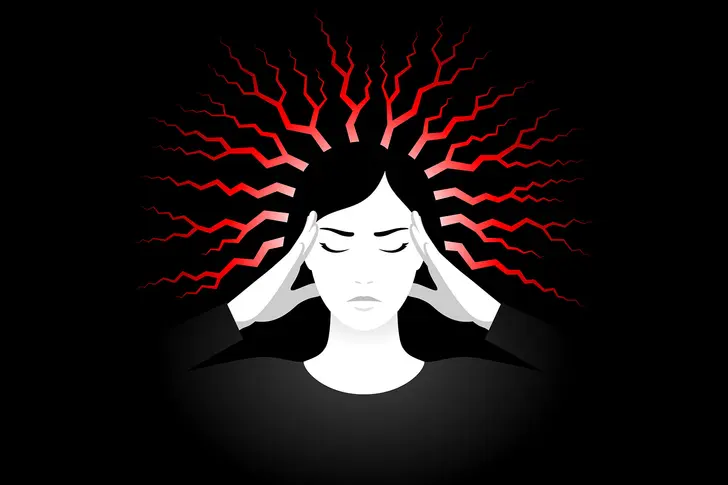- Headaches Overview
- Migraine
- Cluster & Tension Headaches
- Other Types of Headaches
- Appointment Prep
- View Full Guide
Introduction to Migraines and Headaches


What's the Difference?
Headaches and migraines are not the same thing. Regular headaches are usually less severe and go away faster. Migraines often cause throbbing pain, can last for days, and may come with nausea or sensitivity to light and sound.

Types of Headaches
Tension headaches feel like a tight band squeezing around your head and are often caused by stress. Cluster headaches cause severe pain around one eye and come in groups. Migraines typically affect one side of your head with intense throbbing pain.

Common Triggers
Many things can trigger headaches and migraines, such as not getting enough sleep or feeling stressed. Some foods and drinks might also cause them, such as wine, aged cheese, or too much coffee. Weather changes and bright lights can be triggers for some people.


Getting Diagnosed
Your doctor will ask about your symptoms and the timing of your headaches. Keep track of your headaches in a diary to help spot patterns. Most people don't need brain scans, but your doctor might order one to rule out other problems.

Treatment Options
For mild headaches, over-the-counter pain relievers, such as acetaminophen or ibuprofen, often help. Migraines might need stronger prescription medications. Some people find relief by resting in a dark, quiet room or placing a cold pack on their forehead.
PHOTO CREDITS:
Slide 1 - Elena Abrazhevich / Shutterstock
Slide 2 - pathdoc / Shutterstock
Slide 3 - New Africa / Shutterstock
Slide 4 - Tunatura / Shutterstock
Slide 5 - Linaimages / Shutterstock
Slide 6 - Gorodenkoff / Shutterstock
SOURCES:
National Headache Foundation: "Migraine."
Annals of Neurology: "Familial risk of migraine: A population‐based study."
Daroff, R. Bradley's Neurology in Clinical Practice, 6th edition, Saunders, 2012.
Medical Clinics of North America.
FDA.
Medscape: "Migraine Headache."
American Migraine Foundation: "What Is Chronic Migraine?" "What Type of Headache Do You Have?" "Silent Migraine: A Guide," "Identifying and Treating Migraine," "What Is Migraine?" "What Is Photophobia & Can It Be Treated?" "The Timeline of a Migraine Attack," "Diet and Headache Control," "Abdominal Migraine," "What You Need to Know About Migraine and Botox."
MedlinePlus: "Migraine," "Headaches - danger signs."
American Academy of Family Physicians: "Migraines."
Mayo Clinic: "Migraine," "Migraine Aura," "Celecoxib," "Migraine Headache."
The Migraine Trust: "Menstrual migraine," "Prodrome: Spotting the first signs of a migraine attack," "Cluster headache vs. migraine," "Hemiplegic Migraine."
Johns Hopkins Medicine: "Vestibular Migraine," "Migraine Headaches," "Tension Headaches."
Yale Medicine: "Abdominal Migraine: Symptoms, Diagnosis & Treatment."
U.S. Department of Health and Human Services Office on Women's Health: "Migraine."
Cleveland Clinic: "Migraine Headaches," "A Migraine Without Pain? Yes, It Can Happen, and It's Called an Ocular Migraine," "Migraine Aura."
UpToDate: "Acute treatment of migraine in adults," "Pathophysiology, clinical manifestations, and diagnosis of migraine in adults," "Preventive treatment of migraine in adults."
National Organization for Rare Disorders: "Hemiplegic Migraine."
Stroke Association: "Migraine and stroke."
Journal of Headache and Pain: "Shift from high-frequency to low-frequency episodic migraine in patients treated with Galcanezumab: results from two global randomized clinical trials."
WomensHealth.Gov: "Migraine Fact Sheet."
Cephalalgia: "Abdominal migraine."
National Institute of Neurological Disorders and Stroke: "Migraine."
NYU Langone Health: "Diagnosing Migraine."
American Headache Society: "What's that smell?" "Comparing Neuromodulation Devices," "Five Things Physicians and Patients Should Question."
BMC Neurology: "Global assessment of migraine severity measure: preliminary evidence of construct validity."
Barrow Neurological Institute: "Neuromodulation for Headaches."
Premier Health: "Surgery For Migraine Relief: Fad Or Fact?"
Current Pain and Headache Reports: "Legal Aspects of Migraine in the Workplace."